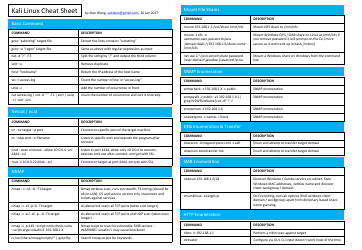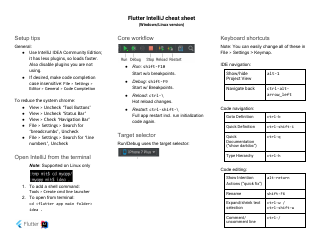Linux Troubleshooting Cheatsheet
The Linux Troubleshooting Cheatsheet is a reference guide that provides tips and solutions for resolving common issues that may arise when using Linux operating systems. It helps users diagnose and fix problems related to system performance, hardware compatibility, software conflicts, network connectivity, and more.
FAQ
Q: What is Linux?
A: Linux is an open-source operating system.
Q: What is a troubleshooting cheatsheet?
A: A troubleshooting cheatsheet is a reference guide that provides quick solutions to common problems.
Q: Why would I need a Linux troubleshooting cheatsheet?
A: A Linux troubleshooting cheatsheet can help you quickly identify and fix issues with your Linux system.
Q: What are some common Linux troubleshooting problems?
A: Some common Linux troubleshooting problems include network connectivity issues, software installation errors, and system crashes.
Q: What are some basic Linux troubleshooting commands?
A: Some basic Linux troubleshooting commands include 'ping' to test network connectivity, 'ls' to list files and directories, and 'ps' to display running processes.
Q: How can I debug a program in Linux?
A: You can use the 'gdb' command to debug a program in Linux.
Q: What is the role of a Linux system administrator?
A: A Linux system administrator is responsible for managing and maintaining Linux systems, including troubleshooting issues.
Q: How can I diagnose a slow Linux system?
A: You can use various tools like 'top', 'htop', and 'iotop' to diagnose a slow Linux system.
Q: What should I do if my Linux system won't boot?
A: If your Linux system won't boot, you can try booting into recovery mode, checking for hardware issues, or reinstalling the operating system.
































